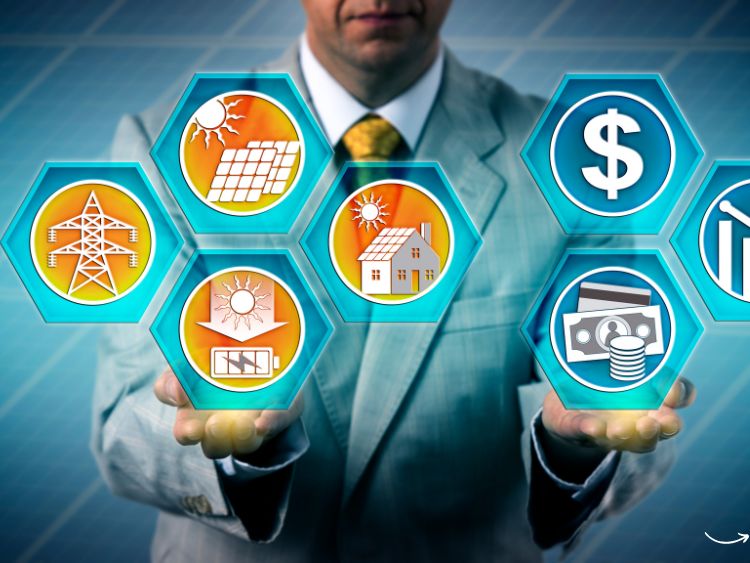What Is Smart Home Technology?
Smart home technology refers to a network of interconnected devices and systems that automate and enhance the functionality of your home. From adjusting your thermostat with a simple voice command to monitoring security cameras remotely, this technology makes daily life easier and more efficient. It’s no wonder it’s becoming a must-have for homeowners everywhere!
Benefits of Smart Home Technology
Why are people raving about smart home setups? Here’s a quick breakdown:
- Convenience: You can control almost everything—lights, locks, appliances—from your smartphone or a central hub.
- Energy Efficiency: Smart thermostats, lighting systems, and appliances help reduce energy consumption and lower your bills.
- Improved Security: Devices like smart locks, video doorbells, and surveillance cameras offer peace of mind by keeping your home secure.
- Customization: Set schedules, routines, and preferences to suit your lifestyle.
- Increased Home Value: A tech-savvy home is attractive to potential buyers, boosting property value.
Popular Smart Home Devices
Ready to upgrade your living space? Here’s a list of some crowd-favorites:
- Smart Speakers and Assistants: Devices like Amazon Echo, Google Nest Hub, and Apple HomePod double as virtual assistants, helping you with everything from playing music to managing your schedule.
- Smart Thermostats: The Nest Thermostat and Ecobee let you control your home’s temperature remotely and learn your habits for optimal energy savings.
- Smart Lighting Systems: Products like Philips Hue and LIFX allow you to customize lighting with color options, dimming features, and scheduling.
- Security Systems: Ring doorbells, Arlo cameras, and SimpliSafe provide top-notch security with real-time alerts.
- Smart Appliances: From refrigerators that track your groceries to washers you can start with an app, smart appliances make chores a breeze.
How Does Smart Home Technology Work?
Smart home devices use wireless communication protocols like Wi-Fi, Bluetooth, or Zigbee to connect with each other and with your smartphone or central hub. Through apps or voice commands, you can control these devices individually or in unison. For example:
- Voice Commands: “Alexa, turn on the lights.”
- Automations: Set routines like “Good Morning” to open blinds, start the coffee maker, and play your favorite tunes simultaneously.
- Remote Access: Forgot to lock the door? No problem—do it from your phone, even if you’re miles away.
Setting Up Your Smart Home
Getting started with smart home technology might seem daunting, but it doesn’t have to be. Follow these steps:
- Choose a Platform: Decide on your primary ecosystem—Amazon Alexa, Google Assistant, or Apple HomeKit.
- Start Small: Begin with a single device, like a smart speaker or thermostat, to get comfortable with the technology.
- Expand Gradually: Add more devices as you understand how they work and which ones fit your needs.
- Optimize Your Wi-Fi: Ensure your internet connection is strong enough to handle multiple devices.
- Integrate Devices: Use apps or hubs to connect everything seamlessly.
Challenges of Smart Home Technology
While smart homes are fantastic, they’re not without their quirks. Here are some potential challenges:
- Privacy Concerns: Data collected by smart devices can be vulnerable to breaches if not properly secured.
- Compatibility Issues: Not all devices play nicely together, especially across different ecosystems.
- Cost: Smart devices can be pricey, though the long-term benefits often outweigh the initial investment.
- Learning Curve: There’s a bit of a learning curve for setting up and managing systems effectively.
FAQs About Smart Home Technology
What is the best smart home system?
The “best” system depends on your preferences. Amazon Alexa is versatile, Google Assistant excels at search integration, and Apple HomeKit is ideal for Apple enthusiasts.
Do smart homes save money?
Absolutely! Energy-efficient devices like smart thermostats and lighting systems can significantly reduce utility bills.
Are smart homes safe?
Yes, but it’s essential to secure your network with strong passwords and two-factor authentication to protect against cyber threats.
Can I install smart devices myself?
Most smart devices are DIY-friendly and come with easy-to-follow instructions. However, some systems, like smart security setups, might require professional installation.
The Future of Smart Home Technology
The world of smart home technology is evolving rapidly. Innovations like artificial intelligence (AI), machine learning, and 5G connectivity are set to make smart homes even more efficient and intuitive. Expect devices that anticipate your needs before you even voice them!
Conclusion
Smart home technology is no longer a luxury—it’s a game-changer for anyone seeking convenience, security, and efficiency. Whether you’re just dipping your toes in or diving headfirst into automation, there’s a solution out there for you. The future is bright, and it’s connected.
Authoritative Links for Further Reading
- https://www.energy.gov/energysaver/smart-home-technology
- https://www.consumerreports.org/smart-home/
- https://www.cnet.com/smart-home/

